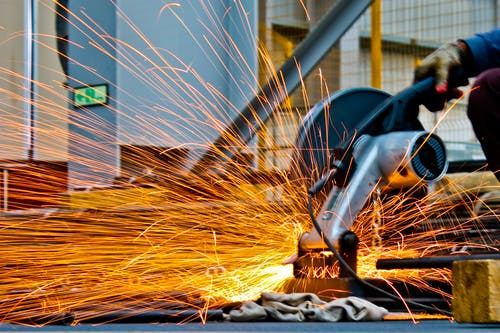Every production line experiences malfunctions and breakdowns in machinery at some point. It’s obviously better when the downtime is planned and then the loss of production is planned for and accounted for in profit projections. But when a machine goes down unexpectedly, the time it can take to get the problem fixed can lead to anywhere from 5 to 20% loss of income.
One of the biggest benefits of Industry 4.0 and the Internet of Things (IoT) is the impact new tools can have on monitoring the health of each machine. Being able to connect machines to the Internet means not only being alerted to a breakdown as soon as it happens, but also being able to track the machine’s activity and note any slowdowns or symptoms of an impending major malfunction.
Consider the following example:
A Breakdown in the Process
Imagine you walk into work Monday morning after a great weekend. Coffee in hand, you are ready to buckle down and get to work. To your dismay, you discover that one of the machines has gone down over the weekend. All you can see is that it’s not working, but you are unsure exactly when it happened or if the guys from the weekend shift called maintenance or not.
Instead of getting the process up and running bright and early in the morning, you now have to put in the call to maintenance and wait. And wait. And wait some more. While all this waiting is going on, a bottleneck is growing at the machine that is down and you are getting worried.
How are you going to explain to senior management why productivity was down for the day? You’ve been complaining for months about this machine causing problems, but no one listened and now you are going to be blamed for the poor results.
Your phone rings and you sigh as you see it’s your boss calling and you steel yourself for the barrage of accusations that’s coming. “A very happy Monday, indeed” you think to yourself as you answer the phone.
Data to the Rescue
The above story would read very differently if the factory was taking advantage of newer technologies and collecting and using data. All they would have needed was a smart system constantly monitoring machine activity and creating an alert when something goes wrong.
That would have eliminated any question of exactly when the machine went down and maintenance could have been notified immediately. A more sophisticated system could even provide information directly to the technician who would then be able to know what would be needed to address the problem before even arriving at the factory floor.
With such a system in place, here’s how the story would go:
It’s Friday afternoon and you are getting ready to leave for the weekend. You are looking forward to some quality time with your family with no work-related issues hanging over your head. Earlier in the week, the data you received from a troublesome piece of machinery made it clear that the machine was well on its way to needing some significant maintenance work to keep it from breaking down completely.
You notified the service company and by Wednesday when the data revealed that the situation was becoming critical, you didn’t even have to wait long for the technician to arrive. Because you shared the reports with him, he knew exactly what was needed to fix the machine and it’s been running smoothly ever since.
When you come back to work Monday morning, refreshed from your relaxing weekend, you start up the assembly line and get ready to present your boss with a fantastic production report.
Interpretation of Data
It is important to note that equally as important to gathering the right data is the correct analysis of the data. In the example above, the employee clearly knew how to analyze the data in order to determine that the machine was in trouble and was also able to communicate the appropriate information to the technician.
One of the key uses of data to be able to manage machine maintenance and prevent breakdowns is comparison. Comparing past to present performance over time will reveal patterns that indicate potential problems. And identifying the problem is half the battle – fixing it will then be the easier part.


